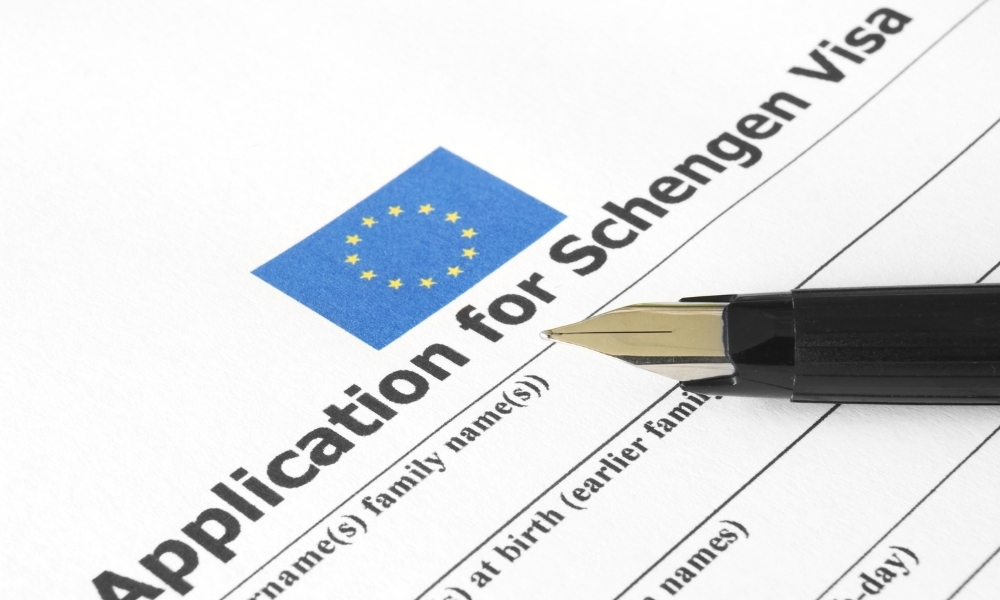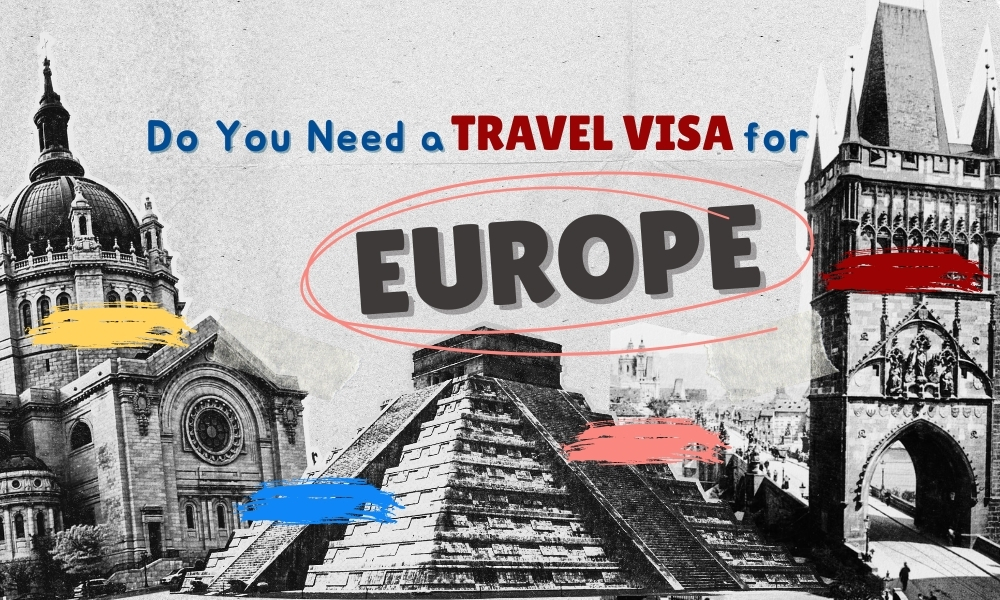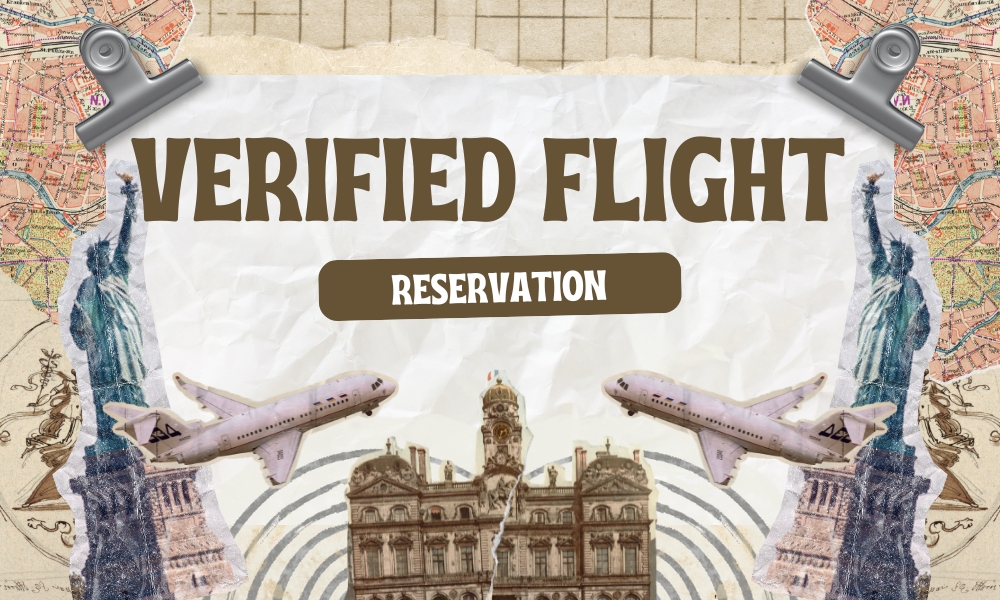Dreaming of wandering through the historic streets of Rome, marveling at the art in Paris, or exploring the vibrant cities of Spain? Europe is a top destination for travelers worldwide, but before you pack your bags, it’s crucial to understand the entry requirements. The question, “Do you need a travel visa for Europe?” can be confusing, as the answer depends on your nationality, the length of your stay, and your travel purpose.
This guide Onward Free will walk you through everything you need to know about getting a travel visa for Europe, from understanding the Schengen Zone to the new ETIAS system, ensuring your journey is as smooth and stress-free as possible.
Understanding the Schengen Zone
First, let’s talk about the Schengen Zone. This is a collection of 29 European countries that have abolished internal border controls. This means that once you enter one Schengen country, you can travel freely to any of the others without going through passport checks. It’s like a domestic flight in your home country!
The 29 Schengen member countries are: Austria, Belgium, Bulgaria, Croatia, Czechia, Denmark, Estonia, Finland, France, Germany, Greece, Hungary, Iceland, Italy, Latvia, Liechtenstein, Lithuania, Luxembourg, Malta, the Netherlands, Norway, Poland, Portugal, Romania, Slovakia, Slovenia, Spain, Sweden, and Switzerland.
Keep in mind that not all European Union (EU) countries are in the Schengen Zone (like Ireland and Cyprus), and some non-EU countries are (like Iceland, Norway, Switzerland, and Liechtenstein).

Who Needs a Visa to Visit Europe?
Whether or not you need a visa depends entirely on your citizenship. Understanding the requirements for a travel visa for Europe is the first step. The rules are generally divided into two main categories.
Citizens of countries that can enter Europe visa-free
Citizens of over 60 countries, including the United States, Canada, the United Kingdom, Australia, New Zealand, and Japan, can enter the Schengen Zone for up to 90 days within any 180-day period without a visa. This is perfect for tourism, short business trips, or visiting family. However, this visa-free access is changing slightly. Starting in 2025, these travelers will need to apply for an ETIAS travel authorization online before their trip (more on that below).
Citizens who require a Schengen visa
Citizens from over 100 countries are required to obtain a Schengen visa before traveling to Europe. This includes travelers from countries in Asia, Africa, and the Middle East, as well as Russia and China. This visa must be secured before you leave your home country.
Special cases (long-term stays, study, work)
The 90-day visa-free rule and the standard Schengen visa are for short stays only. If you plan to stay in Europe for longer than 90 days to work, study, or live, you will need to apply for a national visa directly from the embassy or consulate of the country where you plan to spend most of your time.
Schengen Visa Explained
A Schengen visa is a short-stay visa that allows a person to travel to any member of the Schengen Area for up to 90 days for tourism or business purposes. It allows you the freedom to travel throughout the 29 participating countries without needing separate visas for each one. This is the most common type of travel visa for Europe for tourists.

Visa Exemptions and ETIAS (Starting 2025)
The biggest upcoming change for travelers is the European Travel Information and Authorisation System (ETIAS). Starting in mid-2025, citizens from visa-exempt countries (like the U.S., Canada, UK, etc.) will be required to obtain an ETIAS before entering the Schengen Zone.
ETIAS is not a visa. It’s an online pre-travel authorization designed to strengthen security. The application is a simple online form that should only take about 10 minutes to complete. Once approved, your ETIAS will be valid for three years and can be used for multiple entries.
How to Apply for a Schengen Visa
Applying for a travel visa for Europe requires careful preparation. If your nationality requires a visa, you’ll need to follow the application process carefully. Here are the general steps:
- Determine which country’s embassy to apply to: You should apply at the consulate of your main destination. If you’re visiting multiple countries for an equal amount of time, apply at the consulate of the country you will enter first.
- Complete the application form: Fill out the official Schengen visa application form accurately.
- Gather required documents: This typically includes:
- A valid passport with at least three months of validity beyond your planned departure date.
- Two recent passport-sized photos.
- Proof of travel insurance.
- A cover letter explaining your travel itinerary.
- Proof of accommodation (hotel bookings, etc.).
- Proof of financial means.
- Proof of a return or onward ticket.
- Schedule an appointment: Book an appointment at the embassy, consulate, or a designated visa application center.
- Attend your interview: Submit your documents and potentially answer a few questions about your trip.

Common Questions About a Travel Visa for Europe
Here are answers to some of the most frequently asked questions about traveling to Europe to help you plan your trip.
Can you travel across multiple countries with one Schengen visa?
Absolutely! That is the primary benefit of the Schengen visa. Once you have it, you can travel freely between all 29 member countries within the 90-day limit.
What happens if you overstay your visa?
Overstaying your visa-free period or your Schengen visa is a serious offense. Consequences can include fines, deportation, and a ban on re-entering the Schengen Zone for several years. Always respect the 90/180-day rule.
Do you need a return or onward ticket to apply?
Yes, this is a critical requirement. Embassies and border officials need to see proof that you intend to leave the Schengen Area before your visa or 90-day limit expires. This is a standard part of the application for a travel visa for Europe.
However, buying a full-price return ticket can be expensive and inflexible, especially if your travel plans aren’t set in stone. This is where a service like OnwardFree.com becomes invaluable. We provide travelers with a verifiable onward ticket for just $9. This legitimate flight reservation satisfies the proof of travel requirement for visa applications and immigration checks without forcing you to commit to a fixed return date.

Travel Tips for Stress-Free Entry into Europe
To make your arrival in Europe as smooth as possible, keep these essential tips in mind. Following these tips can simplify the process of getting your travel visa for Europe.
- Check Your Passport: Ensure your passport is valid for at least three months after your intended departure date from Europe.
- Get Travel Insurance: Many Schengen visa applications require it, and it’s a wise choice for any international trip.
- Carry Your Documents: Even if you are from a visa-exempt country, it’s a good idea to have copies of your accommodation bookings, travel insurance, and onward ticket with you.
- Know the 90/180 Rule: Remember that you can only stay for 90 days within any 180-day period. Use an online calculator if you need to track your days.
Conclusion
Navigating the rules for a travel visa for Europe can seem complicated, but with a little preparation, it’s perfectly manageable. By understanding whether you need a visa, preparing for the new ETIAS system, and ensuring you have all the right documents—like proof of onward travel—you can look forward to an incredible European adventure.






0 Comments